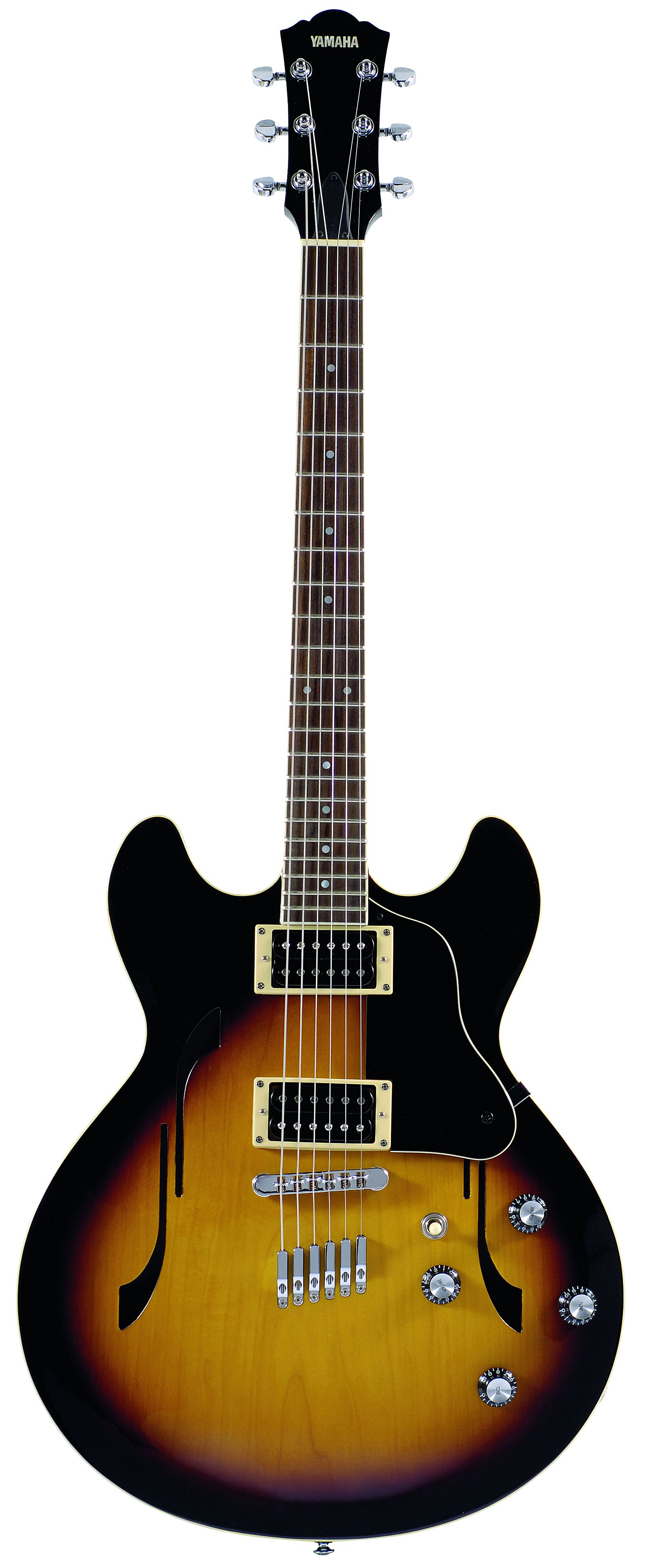MusicRadar Verdict
The SA500 stands out as something a little special: a good sounding and very affordable version of one of the all-time classic guitar designs. If you've never owned an ES-335-alike, now's the time.
Pros
- +
Nice build and original take on the ES-335. Sounds good.
Cons
- -
Once plugged in, very little.
MusicRadar's got your back
Launched in 2005 along with its more costly three P-90 and Bigsby-equipped Troy Van Leeuwen signature sibling, the SA500 is essentially the same guitar without the Bigsby and more conventional twin-humbucker layout.
Despite its ES-335-like construction and general style, the 'Art Deco' f-holes, not to mention the unique Yamaha AES bridge with those elliptical humped saddles, create a subtly different style.
Overview
Overall construction is pretty tidy. The body is laminated maple with a set neck that looks more like maple than the quoted mahogany. The double edge and fingerboard binding is pretty clean, only slightly rough edges to those f-holes betray the lowly price tag.
The old-style brown sunburst looks the part too (it's also offered in a more rock 'n' roll-looking black) and also, thanks to a lighter centre block, this guitar is noticeably lighter than the Troy Van Leeuwan signature.
For such a low-priced instrument few will find fault with the neck in terms of shape. It's quite a big, rounded handful that is not V'd in any way, so it actually feels quite big in the hand.
A slightly higher fret wire would be welcome, as it's a little low for really easy bending, but the overall playability, despite a few buzzes and rattles, is quite fluid, especially when amped rather than noodling acoustically. Overall the deep dark brown looks quite expensive - even though the simple pearloid dot inlays are hardly imaginative.
Want all the hottest music and gear news, reviews, deals, features and more, direct to your inbox? Sign up here.
While many guitars at this price would use generic Gibson-style hardware, along with that smart Yamaha tune-o-matic-style bridge, instead of a stud tailpiece we have six individual chromed string retainers very cleanly inset into the top.
While you lose the (rarely used) ability to alter the height of the strings behind the bridge, this set-up could possibly help sustain and, aside from looking pretty smart, it ties the SA500 in with other recent Yamaha electrics like the AES620.
Unlike the AES620 and many other modern Yamahas, we actually get a volume and tone for each of the open-coiled Yamaha humbuckers, plus a three-way toggle all in pretty much the same positions as an ES-335. The output jack is side, not top, mounted but the pickguard is a close approximation of Gibson style, adding to the modern/vintage vibe.
In use
Listening clean, the sound is bigger in the lower mid and bass end than a similarly priced twin-humbucker guitar; there's not the mid-range push and there's less definition to the low end. The volume and tone control work very smoothly and the overall playability is surprisingly fast and fluid compared to the slightly buzzy unplugged tone.
The bridge pickup is a little spiky on top but that can be smoothed out by the tone control; the neck pickup is a good 'home' sound for blues and jazz and, while the middle position adds a little jangle, it's especially good if you back off the bridge pickup for a slightly more defined alternative to just the lone neck voice.
Add a little dirt to the sound, and some volume, and the SA500 enters the blues/rock territory with ease. You have to be careful with the gain as feedback is pretty easily introduced and the sound can quickly become mushy and indistinct. But set up the right balance of gain and volume and you can see why so many fusion and blues soloists choose this type of guitar design.
Clean up your preamp and stoke up the volume though, and there's plenty of clean crunch for more current guitar thrash/ jangle styles, not to mention classic Britpop strum.
Our advice if you're checking out one of these is not to dwell on the rather uninspired unplugged voice, but plug it in and try as many different styles as you can muster. An ES-335 is one of the most versatile guitars there is, and this interpretation of that classic Gibson design doesn't disappoint.
Dave Burrluck is one of the world’s most experienced guitar journalists, who started writing back in the '80s for International Musician and Recording World, co-founded The Guitar Magazine and has been the Gear Reviews Editor of Guitarist magazine for the past two decades. Along the way, Dave has been the sole author of The PRS Guitar Book and The Player's Guide to Guitar Maintenance as well as contributing to numerous other books on the electric guitar. Dave is an active gigging and recording musician and still finds time to make, repair and mod guitars, not least for Guitarist’s The Mod Squad.

